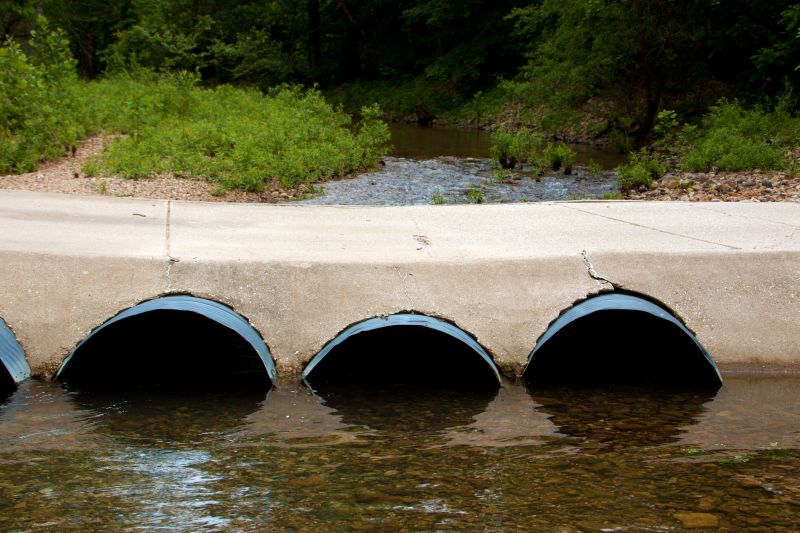Ultimate Guide To Driveway Culvert Cleaning Equipment For Homeowners
Find out which tools and supplies are essential for maintaining clear and durable driveway culverts with ease.
 Maintaining proper drainage in a driveway often involves ensuring that culverts are clear of debris and obstructions. When culverts become clogged or blocked, water can accumulate and cause erosion, pooling, or even structural damage to the driveway. Regular cleaning of culverts is essential for preserving the integrity of the property and preventing costly repairs. Various tools and products are available to facilitate this maintenance, ranging from manual tools to powered equipment. Choosing the right products depends on the size of the culvert, the typical debris encountered, and personal preference for manual versus powered cleaning methods.
Maintaining proper drainage in a driveway often involves ensuring that culverts are clear of debris and obstructions. When culverts become clogged or blocked, water can accumulate and cause erosion, pooling, or even structural damage to the driveway. Regular cleaning of culverts is essential for preserving the integrity of the property and preventing costly repairs. Various tools and products are available to facilitate this maintenance, ranging from manual tools to powered equipment. Choosing the right products depends on the size of the culvert, the typical debris encountered, and personal preference for manual versus powered cleaning methods.
Top Overall Option
Versatile Drain Cleaning Kit
A comprehensive drain cleaning kit that includes manual augers, flexible rods, and various nozzle attachments. Designed to handle a range of culvert sizes and debris types, this kit offers adaptability and ease of use for homeowners and professionals alike.
Types of Products For Driveway Culvert Cleanings
Manual Drain Augers
Hand-operated tools ideal for small to medium culverts, allowing precise removal of debris with minimal equipment.
Power Augers
Motorized devices that can quickly clear larger or heavily clogged culverts, reducing manual effort.
High-Pressure Water Jetters
Equipment that uses powerful water streams to dislodge and flush out debris from culverts.
Flexible Drain Rods
Extendable rods that can navigate bends and curves in culverts for thorough cleaning.
Drain Cleaning Nozzles
Attach to pressure washers to enhance water jetting capabilities for stubborn blockages.
Drain Snakes
Long, flexible tools used to break up and remove debris within pipes and culverts.
Drain Brushes
Scrubbing tools designed to loosen debris stuck to pipe walls, aiding in cleaning efforts.
Drain Cleaning Cables
Heavy-duty cables that can be fed through culverts to clear obstructions.
Drain Inspection Cameras
Camera-equipped devices for inspecting culverts before and after cleaning to assess blockages.
Protective Gear
Gloves, goggles, and waterproof clothing to ensure safety during cleaning procedures.
Popular Choices
Widely used for their simplicity and effectiveness in small culvert maintenance.
Favored for larger projects due to their efficiency in clearing heavy debris.
Popular among professionals for their ability to thoroughly clean culverts without chemicals.
Trusted for navigating complex pipe layouts and reaching difficult areas.
Commonly used for accurate assessment of culvert conditions before cleaning.
Often paired with pressure washers for enhanced cleaning power.
A staple tool for clearing moderate blockages in culverts.
Helpful for removing stubborn buildup along pipe walls.
Versatile tools suitable for various culvert sizes and obstructions.
Essential for safe operation during manual and powered cleaning tasks.
Manual tools such as drain snakes and augers are popular for their simplicity and effectiveness in small to medium-sized culverts. They allow for precise removal of debris like leaves, mud, or small obstructions. For larger or more heavily clogged culverts, powered augers or high-pressure water jetters can significantly reduce the effort required to clear blockages. These devices often come with adjustable settings to control water pressure and flow, making them versatile for different culvert sizes and debris types.
In addition to cleaning tools, protective gear such as gloves, goggles, and waterproof clothing is vital to ensure safety during maintenance. Proper disposal of debris is also important to prevent re-clogging or environmental issues. For those who prefer less manual labor, specialized drain cleaning nozzles and attachments for pressure washers can be highly effective, delivering a strong stream of water to dislodge stubborn debris. Overall, selecting the right products for culvert cleaning involves considering the culvert’s dimensions, typical debris, and personal comfort with manual or powered tools, ensuring efficient and safe maintenance routines.
Key Buying Considerations
- Culvert size and diameter to ensure compatibility with tools.
- Type of debris commonly encountered, such as leaves, mud, or small obstructions.
- Frequency of maintenance to select durable, long-lasting products.
- Manual versus powered options based on physical capability and project size.
- Ease of use and setup for the intended user experience.
- Compatibility of attachments and accessories with existing equipment.
- Safety features and protective gear requirements.
- Portability and storage considerations for equipment ease.
- Power source availability for electric or powered tools.
- Budget constraints while balancing quality and functionality.
- Environmental conditions, such as exposure to water and weather.
- Availability of replacement parts and customer support.
- Ease of cleaning and maintenance of tools after use.
- User reviews and ratings to gauge product effectiveness.
- Warranty and return policies for peace of mind.
